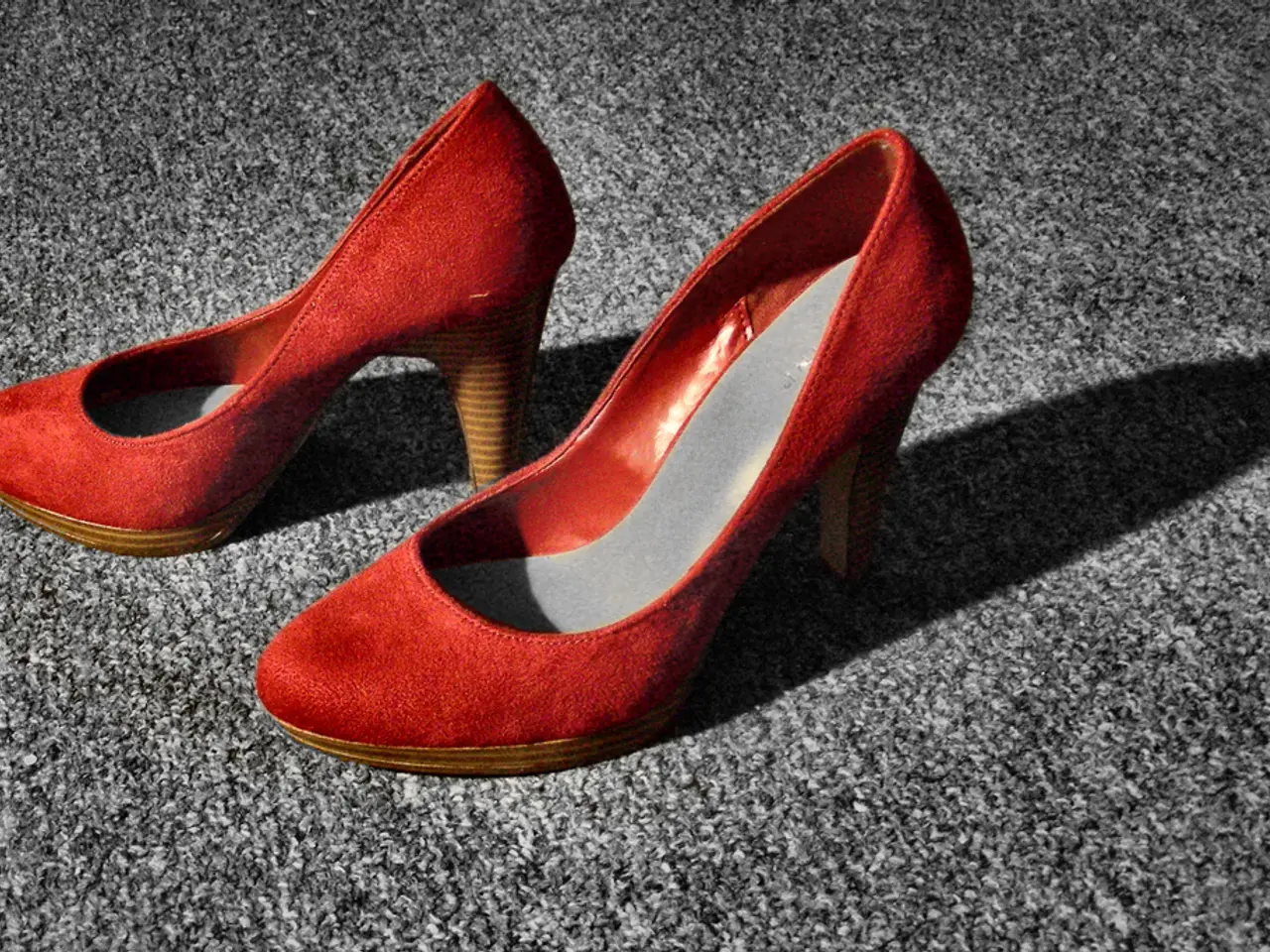Arthritis in the midfoot: Recognizing symptoms, determining causes, and seeking remedies
Midfoot arthritis is a common condition affecting the bones and joints in the middle part of the foot. This article explores the different types of arthritis that can impact the midfoot, their causes, symptoms, and treatment options.
Types of Midfoot Arthritis
Osteoarthritis (OA)
Osteoarthritis is a degenerative "wear and tear" arthritis that affects the cartilage cushioning the joints in the midfoot. It typically develops slowly over many years and can be related to aging or repeated stress on the foot. In some cases, OA can also arise post-traumatically after an injury such as a fracture or dislocation. Symptoms include midfoot pain, aggravated by walking or standing, with stiffness and decreased joint motion as the disease progresses. Treatment for OA includes lifestyle modifications, physical therapy, medications, and in severe cases, joint fusion surgery.
Post-Traumatic Arthritis
Post-Traumatic Arthritis develops after an injury to the midfoot bones or joints, such as a fracture or dislocation, that damages the cartilage either immediately or via altered joint mechanics over time. Symptoms and presentation are similar to osteoarthritis but specifically linked to prior trauma. It may take years or decades post-injury to manifest as symptomatic arthritis.
Rheumatoid Arthritis (RA)
Rheumatoid Arthritis is a chronic autoimmune inflammatory arthritis that affects synovial joints, including those in the midfoot. Characterized by symmetrical joint involvement, swelling, pain, stiffness, and potential deformity, RA can lead to progressive joint deformity and disability if untreated. More common in women aged 40-60, risk factors include smoking and family history. RA can cause midfoot arthritis and is associated with symptoms like swelling and limited joint motion.
Other Inflammatory Arthritides
Conditions such as psoriatic arthritis and peripheral spondyloarthritis can also affect the midfoot joints. These present with inflammatory joint symptoms similar to RA but have distinct clinical patterns and systemic features.
Characteristics of Midfoot Arthritis Types
| Type | Cause | Onset | Symptoms | Joint Involvement | Treatment Options | |--------------------------|----------------------------------|------------------------|--------------------------------|-----------------------------------|----------------------------------------| | Osteoarthritis | Cartilage wear & tear | Gradual, with age, or post-injury | Pain, stiffness in midfoot | Can affect any midfoot joint | Conservative: PT, meds; surgery if needed | | Post-Traumatic Arthritis | Previous fracture/dislocation | Months to years post-injury | Similar to OA, pain and limited motion | Localized to injury site | Similar to OA | | Rheumatoid Arthritis | Autoimmune inflammation | Variable, often early adulthood to middle age | Swelling, pain, stiffness, systemic symptoms | Symmetrical small joints, including midfoot | Disease-modifying drugs, steroids | | Other Inflammatory | Autoimmune or autoinflammatory | Variable | Inflammatory signs, pain, swelling | May involve midfoot | Immunomodulatory treatments |
Management of Midfoot Arthritis
In addition to medical treatments, several lifestyle modifications can help manage midfoot arthritis symptoms. Assistive devices, such as foot braces, orthopedic shoe inserts, or custom-made shoes, can help with mobility. Lifestyle modifications, such as limiting activities that worsen symptoms, maintaining a healthy weight, or replacing high-impact exercise with lower-impact exercise, can also be beneficial. Exercise, such as swimming, water aerobics, cycling, or using elliptical machines, can help people with midfoot arthritis stay active without aggravating symptoms. Using cold therapy after exercise may help prevent a flare-up of pain.
For a more comprehensive understanding of midfoot arthritis and its management, consult with a healthcare professional. They can help diagnose the condition, recommend appropriate treatments, and guide you towards a healthier, more comfortable lifestyle.
- Other joint pains beyond midfoot arthritis can also be caused by chronic diseases and medical conditions such as rheumatoid arthritis, psoriatic arthritis, and peripheral spondyloarthritis.
- Science and healthcare advancements have developed numerous therapies and treatments for managing midfoot arthritis, with options ranging from medications to joint fusion surgery.
- Workplace wellness, fitness, and exercise play a crucial role in maintaining one's overall health and wellness, and adaptations like lower-impact exercises can help those with midfoot arthritis stay active without worsening their symptoms.
- Mental health is equally important in managing chronic diseases like midfoot arthritis, and stress management techniques, counseling, and support groups can help individuals cope with the psychological aspects of living with the condition.
- Nutrition and skin care are integral components of a holistic approach to health, and adhering to a balanced diet and maintaining good skin hygiene can help improve overall well-being and supplement medical treatments.
- Collaboration with medical professionals and frequent follow-ups are vital for understanding the nuances of midfoot arthritis, exploring treatment options, and evolving a personalized management plan that prioritizes the individual's health and wellness.




